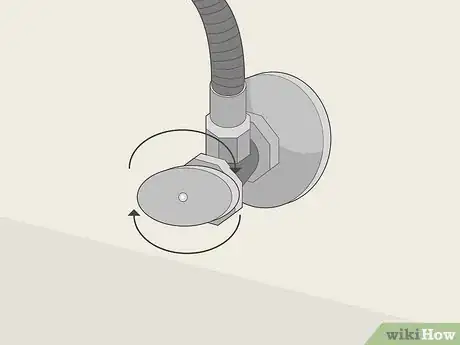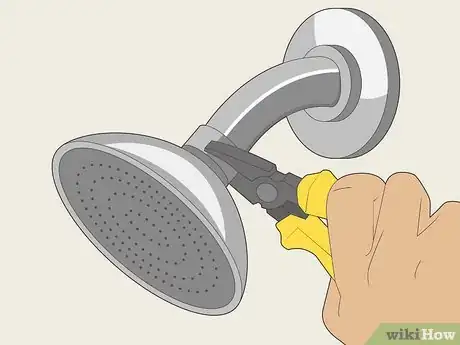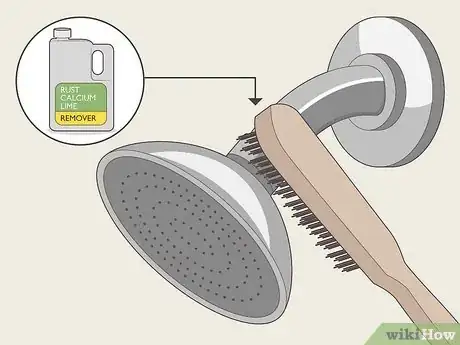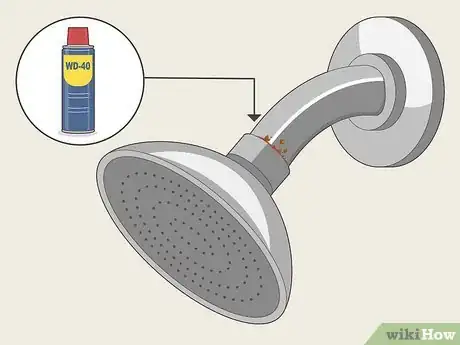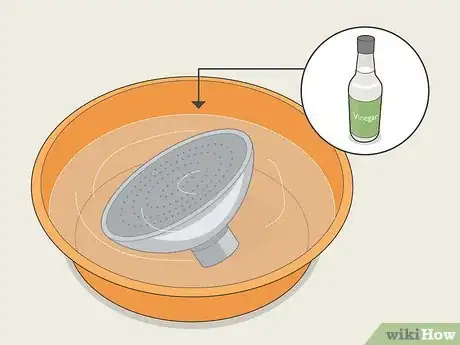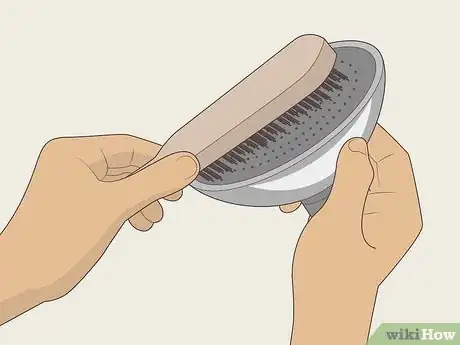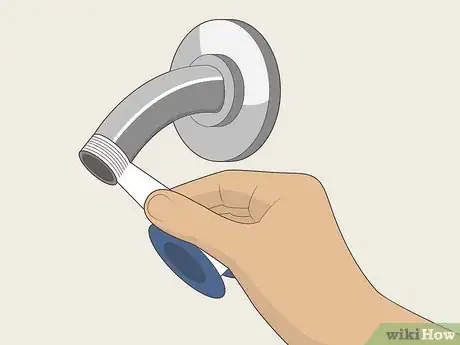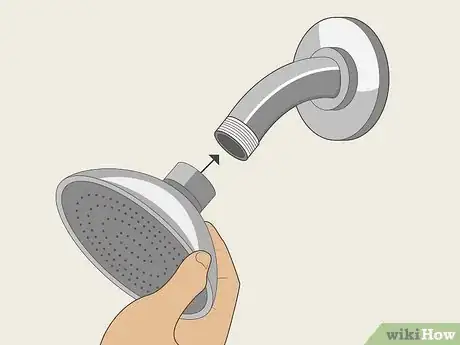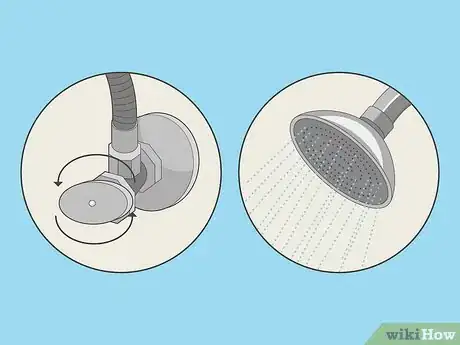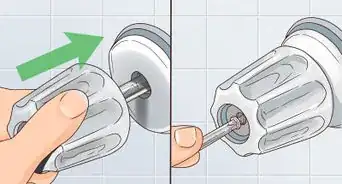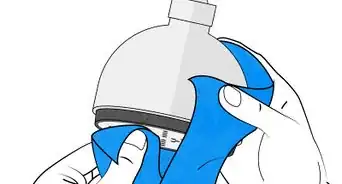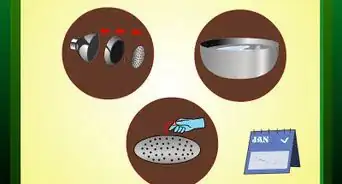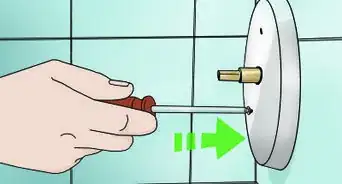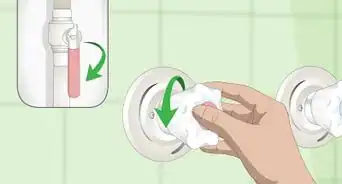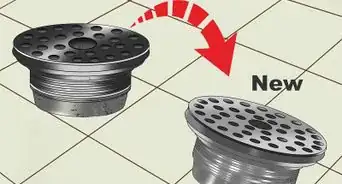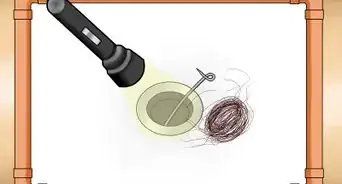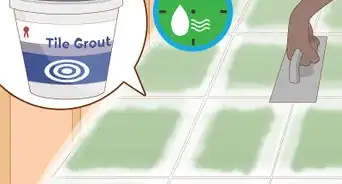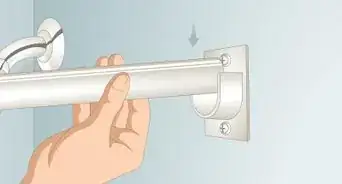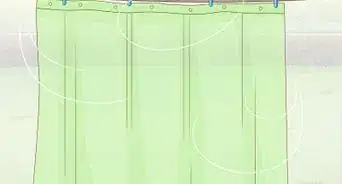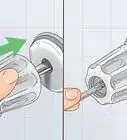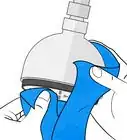This article was co-authored by Fabricio Ferraz. Fabricio Ferraz is the Co-Owner and Operator of Hire a Cleaning. Hire a Cleaning is a family owned and operated business that has been serving San Francisco, California homes for over 10 years.
This article has been viewed 372,936 times.
A shower head is a perforated nozzle that distributes water over a large solid angle into a tub or shower. Over time, your shower head may acquire a buildup of rust or minerals, which can cause the shower head to become stuck. Removing a shower head with rust or mineral build-up is often challenging. Try to loosen the shower head with a variety of tools, such as wrenches, pliers, mallets, and center punches. Apply heat to the stuck shower head to break the caked on rust and mineral build-up. Treat the stuck shower head with rust, calcium, and lime remover, followed by two coats of a penetrating liquid, in an effort to loosen the connector or nut.
Steps
Preparing to Remove Your Stuck Shower Head
-
1Determine why your shower head is stuck. When a shower head is in excellent condition, you should be able to remove it with your hands. If this is not possible, you will need to remove the shower head through other means. Before making any further attempts to remove your shower head, evaluate the fixture to determine why it is stuck:
- Search for signs of rust—is there an orange or copper colored ring around the shower head’s connection to the shower arm?
- Search for signs of mineral build-up—is there a white ring around the the shower head’s attachment to the shower arm?
- If there are no signs of rust or mineral build-up, it is likely that your shower head is attached too tightly.
-
2Turn off the water supply. Typically, if you are removing your shower head by hand, it is not necessary to turn off the water. Removing a stuck shower head, however, presents more challenges and risks. Therefore, it is advised that you shut off the water source. The water valves may be located in one of two places:
- Under the bathroom sink.
- In the basement directly below the tub.
Advertisement -
3Prepare your work space. Throughout this process, you will work with tools and chemicals that could damage your shower or tub. To prevent damage, cover the floor of your shower or tub with a thick work blanket. You will also handle small bits and pieces. To prevent the loss of parts, stuff a cloth down the drain.[1]
Removing your Stuck Shower Head
-
1Use a wrench or pair of pliers to remove the shower head. Often, you can rely on simple tools, such as wrenches or pliers, to loosen your stuck shower head. When one method does not work, try the next method.
- Cover the fixture's connector or plumbing nut with an old cloth to protect the metal.
- Grip the connector or nut with a wrench or pair of locking pliers.
- First, turn the wrench or pliers clockwise in an attempt to break the rust or mineral deposits.
- Turn the tool counterclockwise to loosen and remove the shower head.[2]
-
2Apply a rust, calcium, and lime remover to the shower head. Treating the rust and mineral build-up with chemicals may loosen the connector or nut.
- Read the instructions on the bottle of rust, calcium, and lime remover. Apply the product as instructed.
- Allow the product to sit for the allotted time.
- Scrub off the product with a wire brush, removing the rust, calcium, and lime in the process.
- Wipe the shower head and shower arm clean.[3]
-
3Apply penetrating lubricant to the shower head. Penetrating lubricants, like WD-40 and Liquid Wrench, can work wonders on a stuck shower head.
- Apply one coat of the penetrating lubricant to the connector or nut. Allow it to sit for two hours.
- Apply a second coat of the penetrating lubricant to the connector or nut. Allow it to sit for two hours.
- Cover the connector or nut with a cloth.
- Grip the fixture or nut with a wrench and attempt to loosen the shower head.[4]
Cleaning Your Shower Head
-
1Soak the shower head in a vinegar bath overnight. Once you have removed the shower head, thoroughly clean the fixture to remove any rust or mineral buildup.
- Place the shower head in a small basin.
- Pour white distilled vinegar into the basin until the shower head is completely submerged.
- Allow the shower head to soak over night.
- Rise the shower head by running it under cold tap water.[5]
-
2Remove any remaining rust or mineral build-up from the shower-head. Following the vinegar bath, examine the shower head for signs of rust or mineral-build up. If rust or mineral build-up is visible, apply a rust, calcium, and lime remover to the shower head.After allow the product to sit for the allotted time, use a wire brush to scrub off the product.[6]
- Always follow the instructions listed on the product.
-
3Remove old tape, rust, and or mineral build-up from the shower arm’s treads. Never re-attach a shower head to an uncleaned shower arm.
- Peel off the old plumber’s tape from the shower arm’s treads. Use a wire brush or an exacto-knife if needed.
- If rust or mineral build-up is visible, apply a rust, calcium, and lime remover to the shower head.
- Allow the product to sit for the allotted time.
- Use a wire brush to remove the product and scrub off the rust, calcium, and lime.
- Use an old rag to wipe the shower arm clean.[7]
Reattaching or Replacing Your Shower Head
-
1Cover the shower arm’s threads with plumber’s tape. Applying plumber’s tape, or teflon tape, to the threads of the shower arm prevents leaks.[8]
- Wrap the shower arm’s threads with 2 to 3 layers of plumber’s tape in a clockwise pattern.
- Press the tape between the threads.[9]
-
2Attach your old or new shower head to the shower arm. Once the shower arm is prepared, you may attach your shower head. You may choose to reuse your old shower head or purchase a new fixture. There are several fixtures to choose from:
- Attach a fixed-mounted shower head. This is your basic shower head. Place the shower head onto the threads of the shower arm. Use your hands to turn in a clockwise direction to tighten the fixture.
- Attach a hand-held shower head. This shower head is attached to a hose.
- Place the shower mount onto the shower arm. Tighten the shower mount with your hands.
- Connect one end of the hose to the shower mount and the other end to the shower head.[10] Tighten the connectors by hand.
- Place the shower head in the shower mount.
-
3Turn on the water, check for leaks and tighten as needed. Once you have installed your shower head, turn on your shower’s water supply. Turn on the facet and check for leaks. Tighten your shower head’s connectors until the leak has subsided.
- Add more plumber’s tape if needed.[11]
Expert Q&A
Did you know you can get expert answers for this article?
Unlock expert answers by supporting wikiHow
-
QuestionWhat should I look for in a bathroom cleaner?
 Fabricio FerrazFabricio Ferraz is the Co-Owner and Operator of Hire a Cleaning. Hire a Cleaning is a family owned and operated business that has been serving San Francisco, California homes for over 10 years.
Fabricio FerrazFabricio Ferraz is the Co-Owner and Operator of Hire a Cleaning. Hire a Cleaning is a family owned and operated business that has been serving San Francisco, California homes for over 10 years.
House Cleaning Professional
-
QuestionHow do I clean my shower head?
 Fabricio FerrazFabricio Ferraz is the Co-Owner and Operator of Hire a Cleaning. Hire a Cleaning is a family owned and operated business that has been serving San Francisco, California homes for over 10 years.
Fabricio FerrazFabricio Ferraz is the Co-Owner and Operator of Hire a Cleaning. Hire a Cleaning is a family owned and operated business that has been serving San Francisco, California homes for over 10 years.
House Cleaning Professional
-
QuestionCan I clean my shower head with vinegar?
 Fabricio FerrazFabricio Ferraz is the Co-Owner and Operator of Hire a Cleaning. Hire a Cleaning is a family owned and operated business that has been serving San Francisco, California homes for over 10 years.
Fabricio FerrazFabricio Ferraz is the Co-Owner and Operator of Hire a Cleaning. Hire a Cleaning is a family owned and operated business that has been serving San Francisco, California homes for over 10 years.
House Cleaning Professional
References
- ↑ http://www.homedepot.com/c/how_to_replace_a_shower_head_HT_PG_BA
- ↑ https://www.doityourself.com/stry/how-to-remove-a-stuck-shower-arm
- ↑ https://www.doityourself.com/stry/how-to-remove-a-stuck-shower-arm
- ↑ https://www.doityourself.com/stry/how-to-remove-a-stuck-shower-arm
- ↑ http://www.familyhandyman.com/bathroom/shower-installation/how-to-clean-showerheads/view-all
- ↑ http://www.familyhandyman.com/bathroom/shower-installation/how-to-clean-showerheads/view-all
- ↑ https://www.doityourself.com/stry/how-to-remove-a-stuck-shower-arm
- ↑ http://www.familyhandyman.com/bathroom/shower-installation/how-to-clean-showerheads/view-all
- ↑ http://www.homedepot.com/c/how_to_replace_a_shower_head_HT_PG_BA
About This Article
To remove a shower head, begin by turning off the water supply and covering the tub or shower with a work blanket to protect it. Next, loosen the nut behind the shower head by turning it counterclockwise. If the nut is stuck because of buildup, apply a calcium, lime, and rust remover to area and scrub it with a wire brush before trying again. Alternatively, try applying a penetrating lubricant like WD-40 to the nut, which will loosen it enough so that you can remove the shower head. For tips on cleaning your old shower head with vinegar so that you can use it again, read on!

